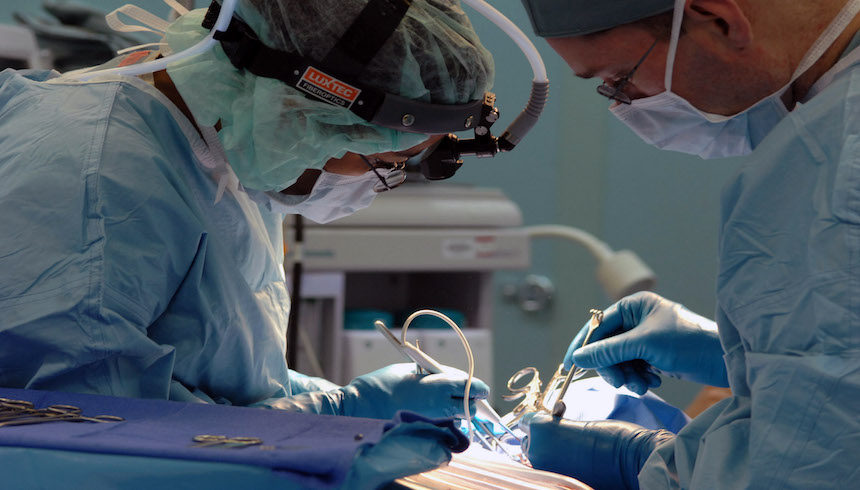Medical Negligence Law in India:
The Indian society’s knowledge on patient’s rights has been growing promptly in the recent past. This is discernible with the progress in the number of litigation cases regarding medical negligence. The social goals of the medical malpractice law are to fend off unsafe practices and compensate for injury caused due to negligence.
Medical Negligence is a failure to act reasonably or to discharge obligations required from a professional. It is the obligation to conduct investigation into the condition of the patient and make a report of the same. Also, except in the cases of emergency, the requirement to take the patient’s consent before a major procedure, surgery or operation. The failure to discharge such obligations gives rise to tortious liability and the court can interfere to award damages as it is a right in rem.
Duties/Conditions for Medical Negligence:
The duties that are specifically mentioned by the Supreme Court of India in cases like Dr. Laxman Balkrishna Joshi v. Dr. Trimbark Babu Godbole and Anr and A.S.Mittal v. State of U.P. are:
(a) duty of care in deciding whether to undertake the case,
(b) duty of care in deciding what treatment to give, and
(c) duty of care in the administration of that treatment.
On failure to deliver these duties, there can be action for negligence. Also, if a doctor has adopted a practice that is considered as ‘proper’ by the experts in the field, he/she shall not be held liable.
The Delhi High Court in Smt. Madhubala vs. Government of NCT of Delhi, divides negligence into three degrees. They are:
- lata culpa, gross neglect
- levis culpa, ordinary neglect, and
- levissima culpa, slight neglect
A doctor is not liable in case of slight negligence and ordinary negligence. But, when the two are clubbed together, there is a certain degree of uncertainty and that’s when courts turn to Bolam Case and Jacob Mathew Case. Although, Bolam case was decided in an English court, it is considered as one of the landmark judgements and is applicable in India as well.
In Bolam Case, the patient suffering from depression was given treatment without giving relaxant due to which he suffered fractures and he filed a complaint against the hospital. The Court examined that there were two ways of conducting the treatment, either with the relaxant or without. Regarding the warning also, there were two ways, to give warning or to give warning only when the patient asks about the risk.
The Bolam test is as follows: ‘doctor need not possess the highest expert kill, it is enough if he exercised ordinary skill of an ordinary competent man exercising that art, is not guilty of negligence if he has acted in accordance with the practice accepted as proper by a responsible body of medical man skilled in the particular act.’
This means that to decide if an act of the doctor was negligent, his actions need to be compared with the act another doctor in similar circumstances and facilities. However, Bolam test applies when it is acceptable to skip informing every risk to the patient but with the advancement of patient’s safety and human rights, it is believed that all facts have to be disclosed to the patient irrespective of how insignificant it is.
Similarly, in Jacob Mathew case, the patient had breathlessness and the doctors arrived after 20-25 minutes with a cylinder. Surprisingly, his condition deteriorated and the doctors realized that the cylinder had no oxygen. They called for another cylinder but by then, the patient had died. The court decided that there was no criminal negligence. The Supreme Court also laid down guidelines in case of medical negligence in this landmark case. They are:
- A private complaint shall not be entertained unless the complainant has a prima facie evidence in the form of an opinion of a competent doctor in the same field with respect to rash or negligent act or omission.
- A police officer, before proceeding against the doctor should get a non-biased opinion from a Government doctor who is an expert in the same field.
- A doctor accused of rashness or recklessness shall not be arrested in a routine manner unless it is necessary for furthering the investigation.
Therefore, this decision gives some relief to the medical profession.
Burden of Proof in case of Medical Negligence in India
The burden of proof in proving a case of medical negligence lies with the complainant, which was held by the court in Calcutta Medical Research Institute v. Bimalesh Chatterjee. He/she can use ‘res ipsa loquitor’ or ‘the things speaks for itself,’ that is, no proof is needed to prove the case beyond the accident itself, which was applied by the National Disputes Redressal Commission in Janak Kantimathi Nathan v. Murlidhar Eknath Masane.
Civil Negligence:
Under Civil Law, the victim can be punished either under Consumer Protection Act, 1986 or Tort Law. It has been explored for years if ‘Medical Services’ is included under the definition of ‘Services’ under Section 2(1)(o) the Consumer Protection Act.
This question arose before the Supreme Court in Indian Medical Association v. Shantha & Ors.,in which the court was of the opinion that professional men should be competent and exercise reasonable care in discharge of their duties. Medical Practitioners do enter into contract of service and can be sued under the Consumer Protection Act.
Further, if Consumer Protection Act cannot be applied, then the victim can use tort law, which is available even if the victim avails free treatment. If the patient can prove that the doctor was negligent and the injury was caused due to that negligence, then he shall be compensated.
Criminal Negligence:
In normal cases of medical negligence, the doctor is liable under civil law. Only when the negligence was so gross and his act was so reckless as to endanger the life of the patient, criminal law for offence under section 304A of Indian Penal Code, 1860 will apply. This was held in Dr. Suresh Gupta vs. Government of N.C.T. of Delhi.
The section is as follows:
304A – Causing death by negligence – Whoever causes the death of any person by doing any rash or negligent act not amounting to culpable homicide shall be punished with imprisonment of either description for a term which may extend to two years, or with fine, or with both.
The circumstances under which the Doctors can be held criminally liable is explicitly mentioned by the Court in Jacob Mathew’s Case. It said:
“To prosecute a medical professional for negligence under criminal law it must be shown that the accused did something or failed to do something which in the given facts and circumstances, no medical professional in his ordinary senses and prudence would have done or failed to do. The hazard taken by the accused doctor should be of such a nature that the injury which resulted was most likely imminent.”
So, the threat of being criminally liable still lingers in the medical profession even though there is protection of accidents caused during lawful acts or acts not intended to cause death.
The main difference between a civil liability and a criminal liability for medical negligence is that under the civil liability, the court considers the amount of damage incurred but in criminal negligence, the court considers the amount and degree of negligence.
Exceptions for Medical Negligence:
It is pertinent to note some of the exceptions for liability in case of medical negligence. They are:
- when a doctor does not charge fee for a treatment, then he cannot be held liable for medical negligence as per definition of service under Section 2(1)(o) of Consumer Protection Act, 1986.
- when the patient or his relative has given consent for a treatment, then the doctor cannot be held liable under section 87-93 of Indian Penal Code, 1860.
- when the damage was too remote and was not caused directly due to doctor’s negligence. Exception were listed out in Medical Association vs V P Santha.
Medical Negligence Law in the United States of America:
Medical malpractice suits began in 1800s. It gained pace in the 1960s and now lawsuits filed for medical malpractice by patients are pretty common in the United States. In order to obtain damages, patient needs to prove that substandard care resulted in the injury. Physicians in the United States carry medical malpractice insurance in order to protect themselves from instances of medical negligence and unintentional injury.
Duties/Conditions for Medical Negligence:
Four elements need to be fulfilled generally, even though all States in the United States have separate laws on medical negligence. These elements include:
(1) the existence of a legal duty on the part of the doctor to provide care or treatment to the patient;
(2) a breach of this duty by a failure of the treating doctor to adhere to the standards of the profession;
(3) a causal relationship between such breach of duty and injury to the patient; and
(4) the existence of damages that flow from the injury such that the legal system can provide redress.
The plaintiff can sue for both economic as well as non-economic damages like medical bills, loss on income, lost earning capacity, mental agony, pain and suffering. There is a statute of limitation to file such a suit ranging from 6 months to 2 years.
Pre-Trial Process:
Very rarely does a medical negligence case in the United States reach a trial stage, as there is adversarial advocacy by respective lawyers of the parties, which promotes self-resolution. After filing of suit and before trial, there is a long process of discovery of information, sharing and understanding between the parties through the help of documents and depositions.
Deposition is a formal proceeding wherein a litigant is questioned by the counsel, under oath and is later produced as evidence before the court. This is also done with a hope that the parties will reach a mutual understanding and settle the case.
The deponents can also be cross-examined. The advocates can raise two kinds of objections during the deposition, that is, assertion of privilege or form of question asked in which case it is a warning to the deponent to answer the question carefully. Such pre trial deposition practice in the United States helps to prevent change of statements by the parties or witnesses during the trial stage. However, the answers in the deposition are taken under oath and there has to be honesty and truth in the answer given.
Burden of Proof for Medical Negligence in the US:
The burden of proof in order to prove medical negligence lies on the complainant. The complainant has to prove that there was legal duty towards him/her, and the said professional/legal duty has been breached, by invoking the concept of standard of care. Standard of care differs in every jurisdiction. In general, the concept of ‘standard of care’ means care that a reasonable similarly situated professional would have provided to the patient.
Subsequent to the deposition mentioned above, the plaintiff’s advocate has to prove that it was the physician’s negligence that caused the injury by using the evidence collected in the pre-trial discovery. The principle followed in the United States with respect to proof is ‘preponderance of evidence’ which means if there is more than 50% chance of negligence on the basis of the evidence produced, then the benefit of doubt is given in favour of the plaintiff. It is less than the principle ‘beyond reasonable doubt’ followed in most cases.
Civil Negligence
Under civil negligence, the plaintiffs are entitled to economic and non-economic damages. Economic damages allow plaintiffs to recover monetary losses such as lost wages and medical expenses. Non-economic damages enable them to recover non-monetary losses such as loss due to pain and suffering. Moreover, each state has a nursing board or state medical board that maintain records of all such instances, carry out investigations and have their own methods of punishment like reprimand, suspension, revocation of license or probation.
Criminal Negligence
Before 1981, there were no cases of criminal negligence in the United States. Between 1981 and 2005, there were 30 reported cases of criminal negligence. One of the most recent widely known criminal cases of medical negligence is against Michael Jackson’s doctor who is charged with involuntary manslaughter.
The United States law is not clear on when a health care provider’s negligence amounts to criminal culpability. However, to cross the line, there has to be ‘gross or flagrant deviation from the standard of care.’ Additionally, the health care provider must also have a culpable state of mind. However, it is true that, a health care provider charged with criminal negligence does not really cause the harm intentionally.
Consequently, it was argued by experts like Dr.Filkins, that applying criminal negligence would make the jury to place more weight on the state of mind rather than the standard of care, which would lead to an arbitrary decision. Professor Hoffman was also of the opinion that placing criminal negligence has no deterrent effect as most of these cases occur unintentionally. Therefore, majority opinion is that medical negligence should remain strictly a matter of civil liability.
Conclusion:
Main Differences in the Laws of India and the United States:
The plantiff’s lawyer is only paid on contingency – fee basis that is only if monetary awards is granted to the plaintiff, will the lawyer be paid. This has been criticized by the United States as a reason for a lot of sham medical negligence suits being filed. The defendants’ lawyer can either be hired personally by the doctor or by the medical malpractice insurance company. One of the major problems in the United States with regard to medical negligence suits are that the pre-trial discovery process usually stretches to years and in the process the plaintiff’s advocate incurs a lot of expenses in the form of court fees, fees for expert testimony, etc. Therefore, plaintiff’s attorney has to spend a lot in terms of money and time with a hope that the decision would be in their favour. On the other hand, lawyers in India are not paid on contingency basis.
Medical negligence cases in the United States are heard by the state courts, where in the jury usually favors the patient and supports huge compensation for the mental suffering undergone by them. Whereas, in India, the cases of medical negligence are heard by consumer courts and compensation are restricted to actual damage suffered by the patient.
It would be highly valuable for the medical field in India and the United States, if doctors and hospitals could notify all errors that are made in the course of their profession. It would stand as a testimony to the most utilitarian profession that they are in and unveil to everyone about the honesty that is followed in the field, thereby instilling faith in the minds of the people about the credibility of the field and its members. Moreover, it would help the government to come out with the most suitable guidelines in order to establish the proper procedure and fair compensation for the victims.
(This paper has been published in International Journal of Socio-legal Research, [Vol. 1, Issue 4])
Picture Courtesy: Wikimedia







